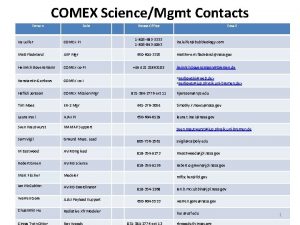Melody J Dickinson MLOG 2010 Jillian Leifer MLOG

- Slides: 1

Melody J. Dickinson, MLOG 2010 Jillian Leifer, MLOG 2010 Advisor: Jarrod Goentzel Sponsor: Pepsi Bottling Group (PBG) Incorporating Traffic Patterns to Improve On-Time Delivery Why We Care January 2010 Poster Session Initial Results OCTOBER 2009 AT-A-GLANCE: • There were 360 unique route sequences. • Of those, drivers made the first stop as scheduled 49 times (13. 6%). • Of those 49, only 37% of delivery time stamps fell within the expected window. (Denoted by the red dot within a rectangle under Methodology) Commercial vehicle routing systems use a static, deterministic model to develop “optimized” route plans for their fleets. • What if traffic patterns could be considered? Delivery fleet vehicles may increase driving efficiency by using stochastic data. • Potential exists for dramatically improved routing systems, as well as the achievement of efficiencies in the delivery process. • Given this information, why would drivers follow their route plans? Sample Route Methodology Next Step: Comparing these routes to Car. Tel data will uncover whether the discrepancy is due to vehicle routing or the stop time model. To evaluate on-time delivery, we will benchmark the current routing system against Car. Tel’s traffic probability projections and compare to actual travel time. Expected Contribution End Start What is Car. Tel? Car. Tel is a distributed, mobile sensor network and telematics system. By installing data collecting devices on a fleet of taxi cabs (Cabernet) and through an i. Phone application, historical data MIT Computer Science & on traffic time probabilities has Artificial Intelligence Laboratory been collected for the greater Boston metropolitan area. 1. 2. 3. Time Stop Transaction Three sets of data are being used: 1. Archived Manifests reflecting drivers’ actual routes 2. Route Plans created by PBG’s routing software 3. Projected Travel Times using historical Car. Tel data The results of this thesis will be applicable to any operator of a delivery fleet. We expect that incorporating traffic patterns will improve the objective function for minimizing time and increasing accuracy. This research will inform the means to improve customer service. In some cases, routes with longer distances may be accepted in order to achieve a faster time overall. Melody J. Dickinson Jillian Leifer

